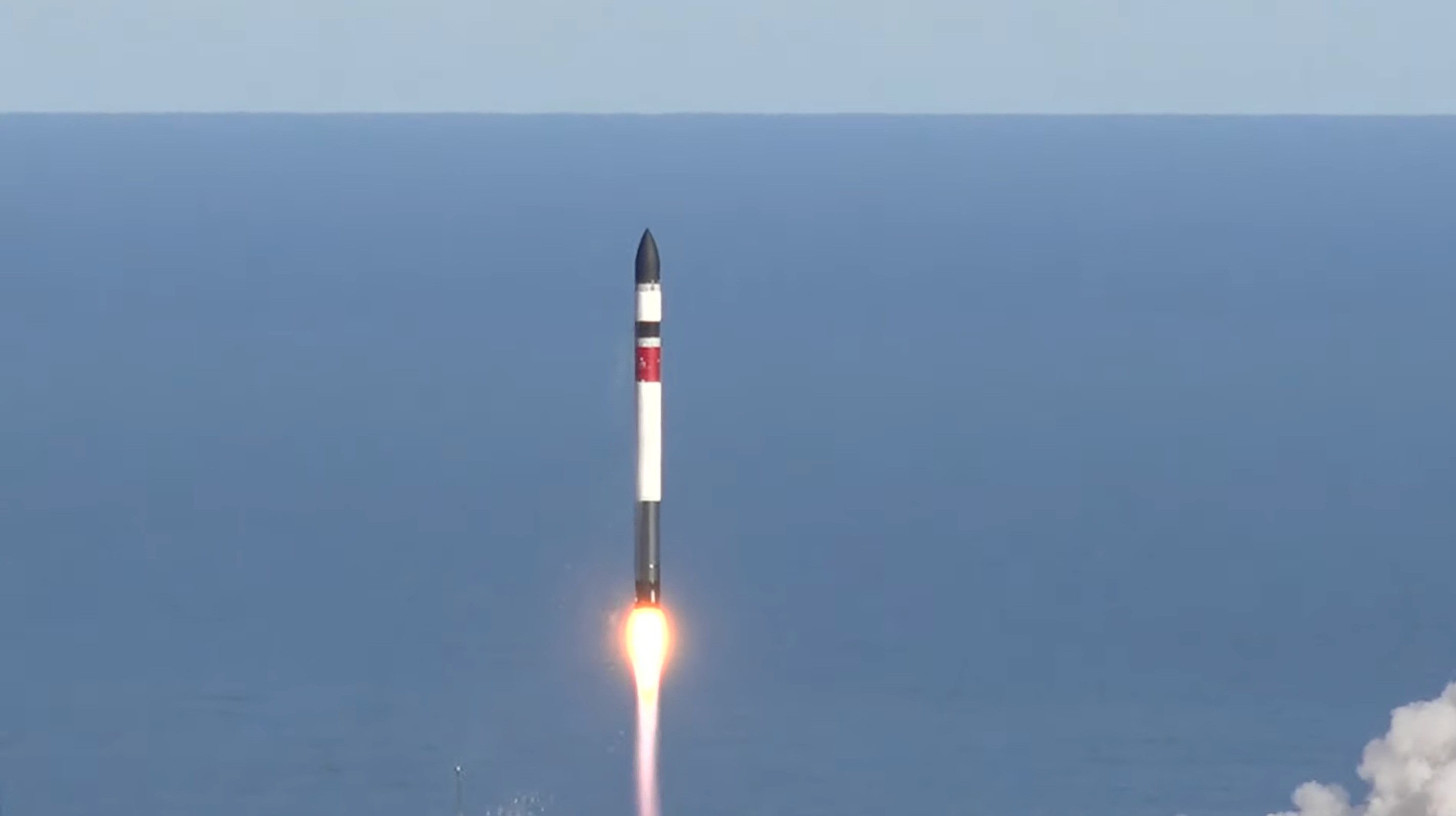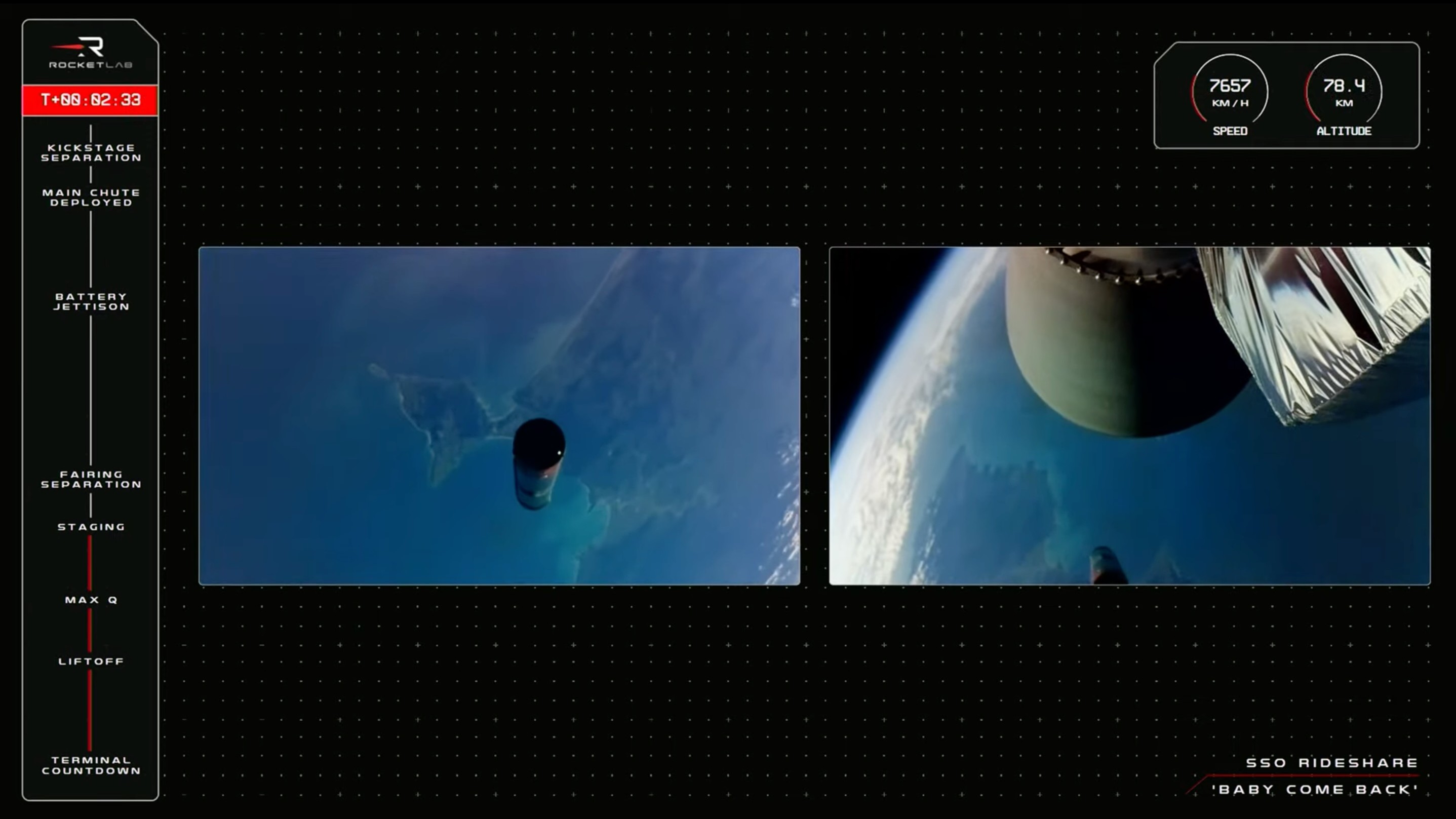Rocket Lab launched seven satellites to orbit Sunday (July 17) and brought the booster back to Earth for a soft ocean splashdown.
An Electron rocket carrying seven small satellites lifted off from Rocket Lab's New Zealand site Monday at 9:27 p.m. EDT (0127 GMT on July 18), after being delayed by a few days due to bad weather.
Rocket Lab called the mission, the company's 39th to date, "Baby Come Back." And there's a good reason for that: About 17 minutes after liftoff, the Electron's first stage came back to Earth, making a soft splashdown under parachutes in the Pacific Ocean. Rocket Lab recovered the booster with a ship and will haul it back to land for inspection and analysis.
Related: Rocket Lab launches 1st Electron booster from US soil in twilight liftoff

Such work is part of the company's effort to make the first stage of the 59-foot-tall (18 meters) Electron reusable, like that of SpaceX's workhorse Falcon 9 rocket. There are key differences between the two recovery strategies, however. For example, Falcon 9 boosters steer themselves to powered vertical touchdowns; Electron is too small to have enough fuel left over for such maneuvers, which explains the parachutes.
Rocket Lab has recovered boosters on several previous missions, including one earlier this year. (The company originally aimed pluck falling Electron boosters out of the sky with a helicopter, but the chopper component has apparently been shelved.)

Booster recovery was a secondary objective of "Baby Come Back," of course; the main goal was to get the seven satellites to orbit safely. And that was done on schedule, over a nearly hour-long span beginning about 49 minutes after liftoff.
Get the Space.com Newsletter
Breaking space news, the latest updates on rocket launches, skywatching events and more!
Four of those payloads are tiny cubesats for NASA's Starling mission, which is designed to test tech for future "swarm" missions.
"Spacecraft swarms refer to multiple spacecraft autonomously coordinating their activities to achieve certain goals," Rocket Lab wrote in a mission description.
"Starling will demonstrate technologies for in-space network communications, onboard relative navigation between spacecraft, autonomous maneuver planning and execution, and distributed spacecraft autonomy — an experiment for small spacecraft to autonomously react to observations, paving the way for future science missions," the company added.
"Baby Come Back" also lofted the LEO 3 demonstration satellite for the Canadian communications company Telesat and two cubesats for Spire Global, a Virginia company whose satellites observe Earth in radio frequencies.
Editor's note: This story was updated at 8:44 a.m. ET on July 16 with the new launch date of July 17. The original target date was July 14. It was updated again at 9:55 p.m. EDT on July 17 with news of successful launch and booster splashdown, then again at 11:55 p.m. EDT with news of satellite deployment and booster recovery.
Join our Space Forums to keep talking space on the latest missions, night sky and more! And if you have a news tip, correction or comment, let us know at: community@space.com.

Michael Wall is a Senior Space Writer with Space.com and joined the team in 2010. He primarily covers exoplanets, spaceflight and military space, but has been known to dabble in the space art beat. His book about the search for alien life, "Out There," was published on Nov. 13, 2018. Before becoming a science writer, Michael worked as a herpetologist and wildlife biologist. He has a Ph.D. in evolutionary biology from the University of Sydney, Australia, a bachelor's degree from the University of Arizona, and a graduate certificate in science writing from the University of California, Santa Cruz. To find out what his latest project is, you can follow Michael on Twitter.









